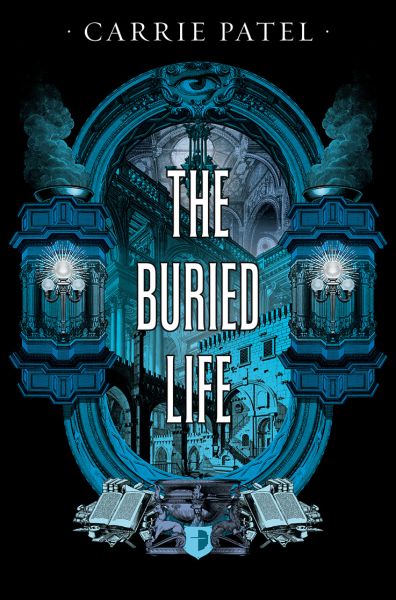And now for something so new it is not even out yet
The Buried Life
By Carrie Patel

21 Nov, 2014
0 comments
I have a habit of focusing on older works because there are so very many of them. Here’s a more recent — forthcoming, in fact — work from a new author that I think is worth your time: Carrie Patel’s March 2015 novel, The Buried Life.
In The Buried Life, a Catastrophe of nature unclear drove the people of Recoletta and cities like it underground, where the good and decent and conventional have remained for the centuries since the whatever it was did the whatever it did. Although those in power, the Council, keep what they know about the Catastrophe to themselves, they seem pretty clear about its roots lying in misapplied information, which is why the Council and its subordinate organizations keep close control on which pieces of Pre-Catastrophe knowledge are disseminated to the public.
Inspector Liesl Malone of Recoletta’s Municipal Police and discreet laundress Jane Lin occupy very different and in some ways opposed niches. Malone’s job is to uncover secrets. The upper classes value Lin because she can be literally trusted with their dirty laundry (although Lin is not quite as discreet as her clients think, as she has a journalist friend). Their lives intersect at a murder scene. Overpowered by an unseen assailant just after stumbling over a murder, Lin is left unconscious but alive, a curious act of mercy on the part of her attacker.
Malone has enough context to know that the murder Lin discovered is not a unique event. Someone is killing select members of Recoletta’s upper crust. The killer is not breaking into the victims’ homes, so it would appear that, far from being some sort of underclass criminal preying on his betters, this murderer is one of the ruling class him- or herself.
Thanks to her job, Lin possesses critical information; if she and Malone trusted each other enough to have full and frank discussions, this would help Malone a great deal in stopping Recoletta’s murder spree. While Lin does not herself fully understand the significance of what she knows, others do. To her growing alarm, the humble laundress slowly comprehends that she is increasingly the focus of interest of some very scary people.
Meanwhile, Malone herself finds herself in opposition to the powerful Directorate of Preservation. When it comes down to a struggle between a flamboyantly eccentric cop and the powers that be, it won’t be the cop who prevails.
***
I would like to begin by saying I love the cover on this. I have no idea whose work it is but it really caught my eye and in a good way.
People who have also seen this seem to be calling this “steampunk”, perhaps because the technological level allowed in Recoletta includes gaslight and gunpowder but not solid state electronics and nuclear power stations1. There is nothing steampunk in this book that was not present in other, older, works of post-apocalyptic fiction, works never described as steampunk. I think “steampunk” has come to be so broadly applied as to be completely meaningless; knowing that a work is “steampunk” conveys almost no useful information about it. Perhaps the term should be permanently retired.
It’s not really part of the story Patel wanted to tell but I am curious how the cities, which seem largely autonomous, prevent each other from climbing up the technological ladder again. It is clear that people understand the advantages involved in salvaging the misplaced knowledge of the past. The arrangement should be unstable but apparently the system, whatever it is, has worked well enough for a fairly long time.
Some people would call this a dystopia. The governments of this time are certainly not going to win awards for transparent government but, in the grand scheme of things, the masses don’t seem any worse off than they would have been in any Western nation of the 19th Century during the long stretch between 1815 and 1914. Maybe better off, because governments really do seem to refrain from acts of open warfare, and the power struggles seem to be mostly limited to toff-on-toff violence.
The world of this book avoids being a snow-globe setting (where you have to assume that the only part of the Earth that survived is the setting of the story) by making it clear that Recoletta is in contact with communities all across the Americas. It also avoids the trap of having absolutely everyone live underground when there is perfectly good land available up above. People do live up on the surface, but just farmers — not anyone with whom the novel is concerned.
I felt like the name Recoletta obviously meant something obvious that I was missing. It evokes “recall” but surely there is something more?
As far as I know, this is Patel’s first novel, possibly her first published fiction. It’s a very solid blend of police procedural and post-apocalyptic political novel. It’s what you might get if Vic Warshawski wandered into the middle of an industrialized Moria. I am certainly curious to see what the sequel, Cities and Thrones, looks like.
The Buried Life’s entry at Angry Robot.
1: As far as we know. How the energy demands of a buried city are handled is a bit obscure, because neither the cop nor the laundress deal with that stuff.
